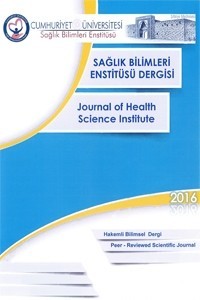A stretched fibrous cord like medial umbilical ligament in a child: Is it a reason for lower abdominal pain?
Abstract
Obliterated umbilical arteries
called as medial umbilical ligament (MUL) located in umbilicovesical fascia. In
English literature, pathologies associated with anatomical variations of MUL
have not been described. We present a 7-year-old male patient admitted with
chronic colic lower abdominal pain and left non-palpable testis. Laparoscopic
exploration showed a significant stretched fibrous cord like MUL with a
peritoneal web on the both sides. The both ligaments were totally excised.
Orchidopexy was performed for the left intraabdominal testis. The patient was
pain free in the second year of follow up. Since there is a cross-neural
sensitization among pelvic structures, a significantly tense MUL might be
considered as a pathology causing recurrent abdominal pain by stretching and
innervating the sensory neural fibers. Laparoscopy easily exposes if there is a
stretching web like MUL from umbilicus to the pelvis. During an exploration for
chronic abdominal pain with unknown etiology, if a significant pathology could
not be identified, pain related to a tense fibrous MUL might be considered in
the differential diagnosis.
Keywords
Medial umbilical ligament abdominal pain nonpalpable testis laparoscopy abdominal wall child
Project Number
yok
References
- 1- Rowe JS Jr, Skandalakis JE, Gray SW (1973) Multiple bilateral inguinal hernias. Am Surg 39:269-270.
- 2- Bloom DA, Guiney EJ, Ritchey ML (1994) Normal and abnormal pelviscopic anatomy at the internal inguinal ring in boys and the vasal triangle. Urology 44: 905-8.
- 3- Nezhat CH, Nezhat F, Brill AI, Nezhat C (1999) Normal variations of abdominal and pelvic anatomy evaluated at laparoscopy. Obstet Gynecol 94:238-42.
- 4- Tokar B, Yucel F (2009) Anatomical variations of medial umbilical ligament: clinical significance in laparoscopic exploration of children. Pediatr Surg Int 25: 1077-1080.
- 5- O'Malley KJ, Monkhouse WS, Qureshi MA, Bouchier-Hayes DJ (1997) Anatomy of the peritoneal aspect of the deep inguinal ring: implications for laparoscopic inguinal herniorrhaphy. Clin Anat 10:313-317.
- 6- Malykhina AP (2007) Neural mechanisms of pelvic organ cross-sensitization. Neuroscience 149:660-672.
- 7- Andrews CM, O'Neill LM (1994) Use of pelvic tilt exercise for ligament pain relief. J Nurse Midwifery 39:370-374.
- 8- Tokue H, Aoki J, Tsushima Y, Endo K (2008) Characteristic of computed tomography and magnetic resonance imaging finding of thrombosed varices of the round ligament of the uterus: a case report. J Comput Assist Tomogr. 32:559-561.
- 9- Moore KL, Persaud TVN (eds.) The developing human: Clinically oriented embryology. (6th ed.). Philadelphia: W.B. Saunders, 1998, pp 341-342.
Bir çocukta gerilmiş fibrotik kord benzeri medial umbilikal ligament: Alt karın ağrısının bir nedeni midir?
Abstract
Umbilikovesikal fasyada
bulunan oblitere umbilikal arterler medial umbilikal ligamenti(MUL) oluşturur. Literatürde,
MUL'un anatomik varyasyonları ile ilişkili patolojiler açıklanmamıştır. Bu
çalışmada 7 yaşında, kronik, kolik tarzda alt karın ağrısı ve sol ele gelmeyen
testis ile başvuran olgu sunuldu. Laparoskopik incelemede, gergin fibrotik bant
benzeri, peritoneal katlantı oluşturan bilateral MUL izlendi. Her iki ligaman
tamamen eksize edildi. Sol intraabdominal testis için orşidopeksi yapıldı.
Hasta izlemin ikinci yılında ağrısızdı. Pelvik yapılar arasında çapraz sinirsel
duyarlılık olduğu için, belirgin bir şekilde gerilen MUL, duyusal sinir
liflerini gererek ve uyararak tekrarlayan karın ağrısına neden olan patolojilerden
biri olarak düşünülebilir. Umbilikustan pelvise uzanan MUL benzeri pelvik
katlantılar laparoskopi ile kolayca ortaya konabilir. Etiyolojisi bilinmeyen
bir kronik karın ağrısı araştırması sırasında, eğer önemli bir patoloji
tanımlanamadıysa, ayırıcı tanıda gergin fibrotik MUL düşünülebilir.
Supporting Institution
yok
Project Number
yok
References
- 1- Rowe JS Jr, Skandalakis JE, Gray SW (1973) Multiple bilateral inguinal hernias. Am Surg 39:269-270.
- 2- Bloom DA, Guiney EJ, Ritchey ML (1994) Normal and abnormal pelviscopic anatomy at the internal inguinal ring in boys and the vasal triangle. Urology 44: 905-8.
- 3- Nezhat CH, Nezhat F, Brill AI, Nezhat C (1999) Normal variations of abdominal and pelvic anatomy evaluated at laparoscopy. Obstet Gynecol 94:238-42.
- 4- Tokar B, Yucel F (2009) Anatomical variations of medial umbilical ligament: clinical significance in laparoscopic exploration of children. Pediatr Surg Int 25: 1077-1080.
- 5- O'Malley KJ, Monkhouse WS, Qureshi MA, Bouchier-Hayes DJ (1997) Anatomy of the peritoneal aspect of the deep inguinal ring: implications for laparoscopic inguinal herniorrhaphy. Clin Anat 10:313-317.
- 6- Malykhina AP (2007) Neural mechanisms of pelvic organ cross-sensitization. Neuroscience 149:660-672.
- 7- Andrews CM, O'Neill LM (1994) Use of pelvic tilt exercise for ligament pain relief. J Nurse Midwifery 39:370-374.
- 8- Tokue H, Aoki J, Tsushima Y, Endo K (2008) Characteristic of computed tomography and magnetic resonance imaging finding of thrombosed varices of the round ligament of the uterus: a case report. J Comput Assist Tomogr. 32:559-561.
- 9- Moore KL, Persaud TVN (eds.) The developing human: Clinically oriented embryology. (6th ed.). Philadelphia: W.B. Saunders, 1998, pp 341-342.
Details
| Primary Language | English |
|---|---|
| Subjects | Clinical Sciences |
| Journal Section | Case Report |
| Authors | |
| Project Number | yok |
| Publication Date | December 31, 2019 |
| Published in Issue | Year 2019 Volume: 4 Issue: 3 |
The Journal of Sivas Cumhuriyet University Institute of Health Sciences is an international, peer-reviewed scientific journal published by Sivas Cumhuriyet University, Institute of Health Sciences.

